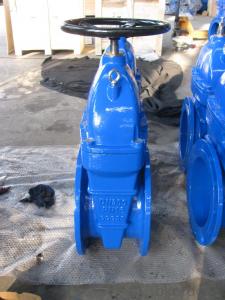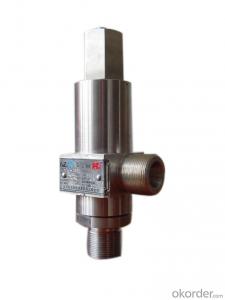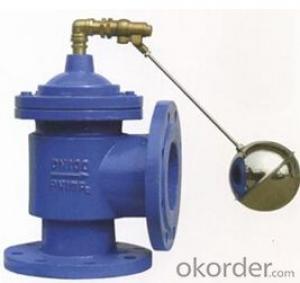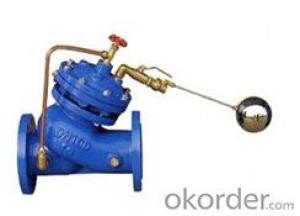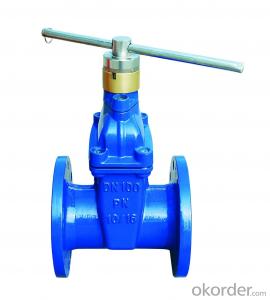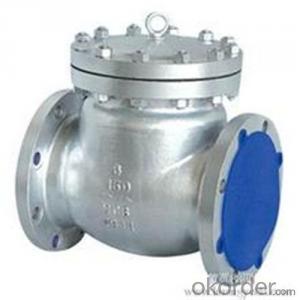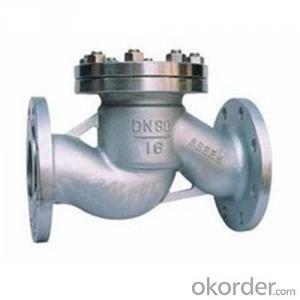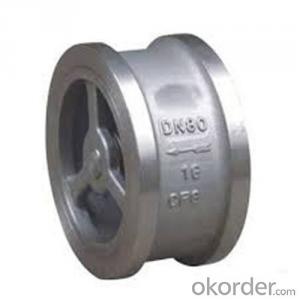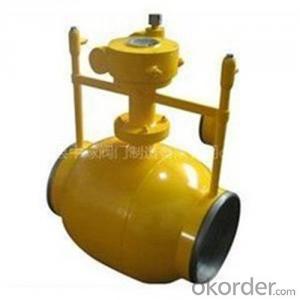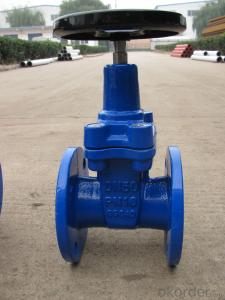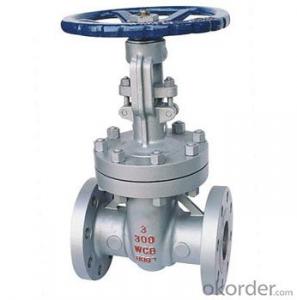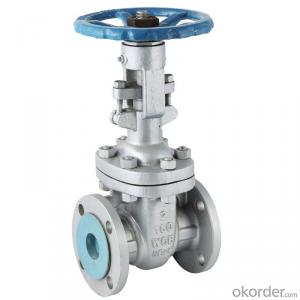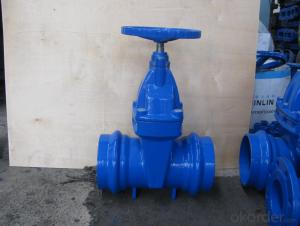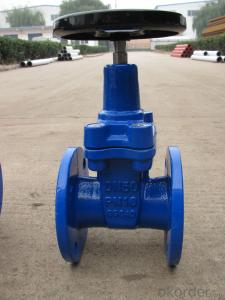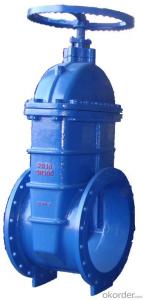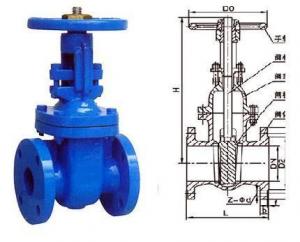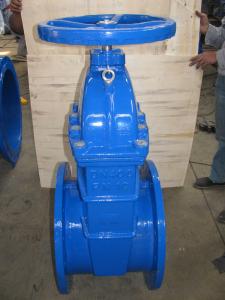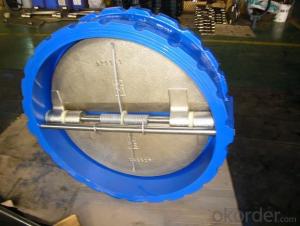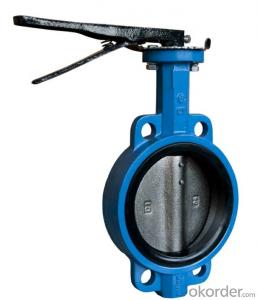Gate Valve with Brass Isolating Valve Good Price
- Loading Port:
- China main port
- Payment Terms:
- TT or LC
- Min Order Qty:
- 1000 set
- Supply Capability:
- 80000 set/month
OKorder Service Pledge
OKorder Financial Service
You Might Also Like
1. Structure of Gate Valve Description:
1. Selected materials, in line with domestic and international standards, high overall quality of the material.
2. In line with the requirements of domestic and foreign advanced standards, reliable sealing, excellent performance, attractive appearance.
3. Sealing pair advanced and reasonable, gate and seat sealing surface with different hardness Stellite (Stellite) cobalt-based alloy cladding made, reliable sealing, high hardness, wear resistance, high temperature, corrosion good anti-abrasion performance, long life.
4. Stem quenched and nitride surface treatment, has good corrosion resistance, scratch resistance and abrasion resistance.
5. The use of flexible wedge gate structure, medium and large caliber set thrust bearings, friction force is small, and with a striking manually open and close with ease.
2. Main Features of the Gate Valve:
Working medium: water, non-corrosive liquid, saturated vapor (≤ 0.6MPa)
Operating temperature: -20 °C ≤ t ≤ 135 °C
Stem: non-rising stem
Body material:Brass/Stainless Steel
Connection:flanged
3. Images of the Gate Valve:


4. Specification of the Gate Valve:
1) Product information: the gate valves supplied are mainly used for adjusting water, steam, oil, gas, and natural gas in chemical industries
2) Standards: AWWA, DIN3352 F4/F5, BS5163, BS5150
3) Connection type: flanged type, push-on type, mechanical joint type, plain ends type
4) Design and Manufacture:API602,BS5352,ANSI B16.34
5) Connection Ends:
1)Socket Welded Dimension:ANSI B16.11,JB/T1751
2)Screw Ends Dimension:ANSI B1.20,JB/T7306
3)Butt Welded:ANSI B16.25
4)Flanged Ends:ANSI B16.5,JB79
6) Test and Inspection:API598,GB/T13927,JB/T9092
5.FAQ
1. Can I get free samples?
A: Yes,we can provide you the free sample, but you need to bear their own delivery costs.
2. Can I request to change the form of packaging and transportation?
A:Yes, We can change the form of the packaging and transportation according to your request, but you have to bear their own costs incurred during this period and the spreads.
3. Can I have my own Logo on the product?
A: Yes, you can send us your drawing and we can make your logo, but you have to bear
their own the cost.
4. Can you produce the products according to my own drawings?
A:Yes,we can produce the products according to your drawings that will be most satisfy you.
- Q: 1992 Ford Crown Vic, 102K, burns oil, no blue smoke, no leaks. My first thought was a valve job. Any other possibilities? Suggestions? What about an approxitmate cost for the valve job? Thanks.
- before that replace the breather and the pcv valve you wouldent nead a valve job but valve seals and you would know if ther bad by if it blows smoke when you first start it, how much are you burning a quart is almost normal on most cars inbetween oilchanges
- Q: Around the relief valve there is water leaking it is not the valve it's self or the threads it's around the out side of it. The valve is on top of the heater
- Is the valve open? If not - I would open it - the pressure of the tank is forcing water out around the valve - by opening the valve you will relieve some of the pressure. Also - turn off the power and call a plumber in the morning- your hot water tank can blow up - not good.
- Q: I got new sprinkler valves put in (Rainbird anti-siphon kind). Every time a valve shuts off, it makes a loud squeak, kind of like plastic rubbing (NOT a bang like water hammering). Is this normal and will it go away? If not, what could be the problem? This is annoying because the sound can be heard in the house as it echoes through the pipes.
- As the valve shuts down, the diaphragm will vibrate as the pressure changes from one side to the other, then it will Thump as it seals. This is normal. However, to isolate the squeak, you may check to see if there is a 1(backflow preventer installed, 2) (if built into the valves) the variable pressure screw on the top of the valve is set correctly. The variable pressure screw usually has a cross top handle (older ones had a dial) and should be set so that on a high pressure line, it shuts down fairly quickly. If this is open all of the way, it can cause the diaphragm to squeal by slowing the internal pressure change to shut it down.
- Q: Or could you put a blow off valve on a supercharger?
- The supercharger will always have the whine sound at idle and normally disappears the higher the RPM is. Now most supercharger systems do come with a by-pass valve which functions the same as a blow off valve. They both are used to prevent surging of the compressor when your throttle body closes. Now the sound is slightly different. With a turbo it is more aggressive where you normally hear the high pitch whistle sound. With the by pass valve it is similar however it is not as high pitched. However you still can here the whoosh sound when you change gears or let off the gas. Now this whoosh sound is only present on superchargers which are equipped with a by pass valve AND the valve is being vented into the atmosphere. Some by pass valve have to be vent back into the air intake assembly which causes the sound not to be there. Normally cars that have the by pass valve after the mass air meter HAVE to be re routed back into the system, so you will not get that noise. And for those applications that have the by pass valve before the mass air normally vents into the atmosphere allowing you to hear that whoose noise. So to make this simple....the blow off valve noise can be heard depending on which type of application you have. And btw...YES you can adapt a blow off valve onto curtain superchargers however normally you will need one with a stiff spring to work. But, I would recommend running a by pass valve instead of a blow off valve for they are designed for superchargers because they are vacuumed operated.
- Q: Ok , I am looking for a valve of some sort that is small (1/4 inch), that has high flow preferably lets all the air out at once.This is for a air cannon type thing. lol
- It is not the type of valve that is your problem unless you are making a very small one to shoot frozen blueberries it is the small size of the 1/4 valve and its piping. Various Spud Gun plans show 3/4-1 1/2 piping with ball valves as well as with RainBird Solenoid (quick-opening globe ?) valves. These typically have 1 1/2 -2 barrels.
- Q: When i was 14 I was diagnosed with a moderate aortic bicusspid valve. I am now 19 at my first cardiologist appointment I was still at moderate. Three months later when i went back in I was rediagnosed with a severe aortic valve. I have every symptom, and I'm getting ready to have it repalced. My question is what am I to expect after surgery. Will i be able to work if not is there anything I can do to have some sort of an income comming in?
- There are minimally invasive approaches, and there are many different techniques of valve surgery and all valve replacements, with choices to provide each patient with the best possible treatment.The patient will normally choose, with their surgeon, the type of incision, the type of valve and the technique. Valve repair versus valve replacement, with coronary artery bypass if necessary. The choices will normally depend on the patient’s opinion, their health history, and their surgeon's opinion. After successful aortic valve replacement, patients can expect to return to their preoperative condition or better. Anticoagulation (blood thinners) with a drug like Coumadin may be prescribed for 6 weeks to 3 months after surgery for those with biological valves, and for life for those with mechanical valves. Once the wounds have healed, most patients should experience few if any restrictions to activity. A patient will require preventative or prophylactic antibiotics whenever having dental work, and should always tell a doctor about their valve surgery before any surgical procedure. Hope this helps Matador 89
- Q: my valves are making a taping sound and i lost a lot of power and need to know will lose valves make me lose power so can someone tell me what they are seat on thanks
- 04 Suzuki Ltz 400
- Q: I have this air canister i want to attach to a homemade Airsoft gun. (please no comments or answers on that).The air canister has an opening on both ends. I thought for simplicity, put a filler valve on one end and a connection to the gun on the other.Exactly what kind of one way filer valve will i need, most of the ones i look at look like propane tank connections and those are for filling and dispensing into the system.
- schrader okorder
- Q: As title.What's an easy way to remember: mitral valve leaflets are anterior and posterior leaflets; tricuspid leaflets are anterior, posterior, and septal (medial); aortic valve leaflets are left, right, posterior leaflets; pulmonary valve leaflets are left, right, anterior leaflets?It's easy to remember all but one valve (mitral) have three leaflets each. Physically aortic root sits behind pulmonary trunk, I guess that makes it easy to remember aortic valve has left, right, Posterior; and that pulmonary valve has left, right, anterior leaflets. Where I'm running out of ideas now is how to remember tricuspid has anterior, posterior and septal leaflets... Please help.Thanks.
- The tricuspid valve has three leaflets which are thin and membranous with commissures that appear more like indentations than true commissures. The TV apparatus is similar to the mitral valve but has greater variability and thinner leaflets. The three leaflets are the anterior, septal and posterior leaflets, with the anterior and septal being larger than the posterior leaflet. TV= tricuspid valve tri-cuspid=3(three leaflets) leaflets=3leaflets Tricuspid: Having three flaps or cusps. The valve that is called the tricuspid valve is situated between the right atrium and right ventricle and permits blood to flow only from the atrium into the ventricle. The aortic valve in the heart also has three cusps. Tricuspid valve (Anat.), the valve, consisting of three triangular membranous flaps, at the opening of the right auricle into the right ventricle in the heart of most mammals; -- sometimes called the tricuspid valves, each flap being regarded as a valve. Take care as always
- Q: automotive cylinder heads and valve
- Valve rotators are just that, they cause the valves to rotate during operation preventing wear in only one spot there by extending the life of the valve and the valve seats.
Send your message to us
Gate Valve with Brass Isolating Valve Good Price
- Loading Port:
- China main port
- Payment Terms:
- TT or LC
- Min Order Qty:
- 1000 set
- Supply Capability:
- 80000 set/month
OKorder Service Pledge
OKorder Financial Service
Similar products
Hot products
Hot Searches
Related keywords
